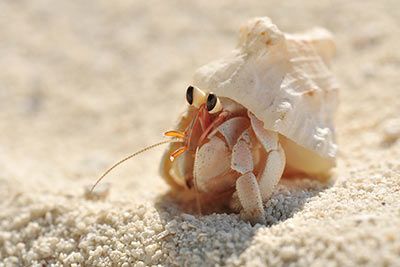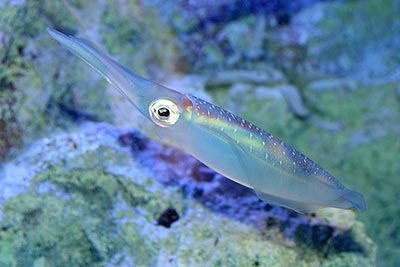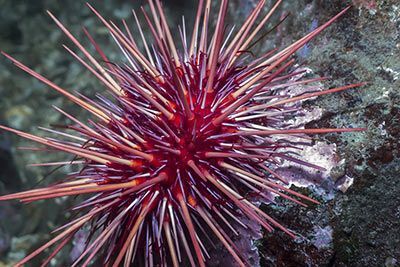Infos on the Animal Class Invertebrates
Main Characteristics of Invertebrates:
"Invertebrates" are animals that do not have a spine. They comprise almost all:
- mollusks (such as snails, mussels, and squids)
- echinoderms (such as starfish)
- crustaceans
- sponges
- worms
They also include insects and arachnids, which are being featured in a separate category on animalfunfacts.net. Most animals are invertebrates – only about 4% of all living creatures are vertebrates (mammals, birds, amphibians and reptiles and fish. On this page you will find information on mollusks, echinoderms, and crusteans. Sponges and worms will follow.
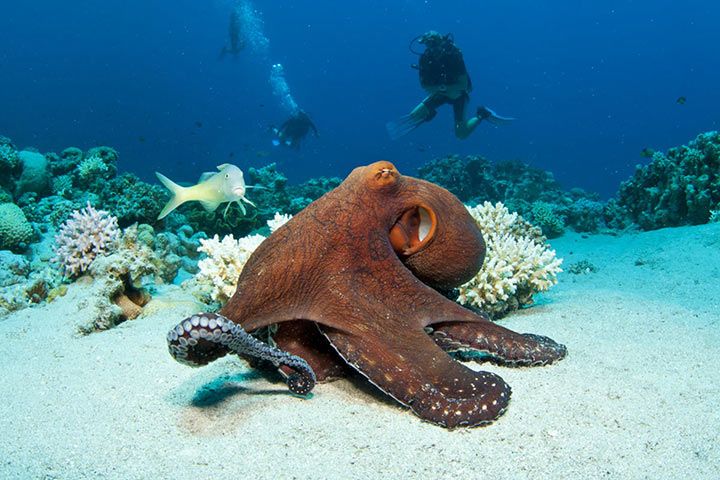
1. Mollusks
- Mollusks are spineless animals.
- Many mollusks have a shell.
- All mollusks have a radula.
There is no clear information on how many mollusk species exist. It is a fact that new species are being found practically every day, and there are countless species, which have not been discovered yet. The number of mollusk species can only be roughly estimated.
How Do Mollusks Differ from Other Animals?
Unlike other animal species , what nearly all mollusks have in common is the radula. They use it to grate and grind their food. Mollusks do not have a skeleton. Their body mainly consists of soft flesh, which is being held together by muscles and the skin (the so-called “mantle”). Not all of them have a hard cuttlebone, which largely consists of aragonite, like the squids. Not all snails creep around with a shell, there are also slugs that do not have any shell.
Lifestyle
Where Do Mollusks Live?
Most mollusks live in the water; some are terrestrial animals (snails).
How Do Mollusks Move?
They creep, swim or run.
What Do Mollusks Eat?
Mollusks feed on plant plankton, algae, or lichens. Some of them also eat other mollusks, crabs or fish.
How Do Mollusks Reproduce?
Most mollusks lay eggs. Larvae hatch from the eggs.
Fun Facts
Holding a Shell to One’s Ear
If we hold a spiral-shaped conch shell to our ear, we get the impression to hear the sound of the sea. Why? The shape of the shell amplifies every noise near you, no matter how silent it may be. Small and large shells sound differently.
Species
There are more than 130,000 species of mollusks:
| Snails: | 100,000 |
| Mussels: | 10,000 |
| Cephalopods/squids: | 1,000 |
| Chitons: | 900 |
2. Echinoderms
- Echinoderms have a skin with spines.
- Echinoderms always live in the water.
- Echinoderms lay eggs.
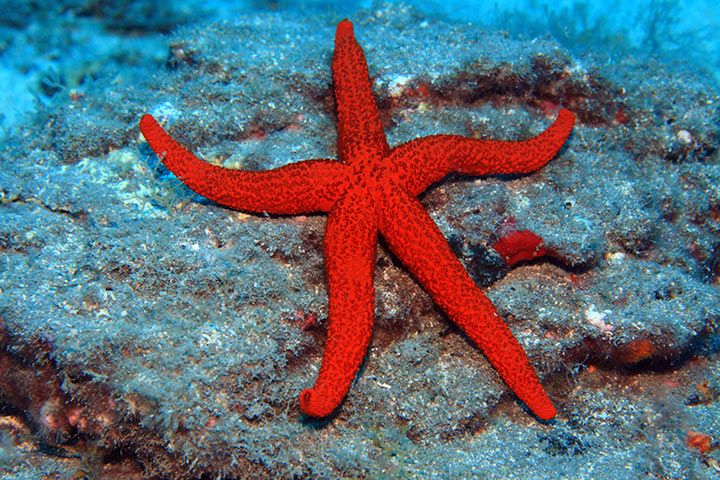
Evolution
Echinoderms emerged more than 500 millions of years ago.
Lifestyle
Where Do Echinoderms Live?
They mostly live at the bottom of the sea, primarily in shallow coastal areas.
What Do Echinoderms Eat?
Depending on the species, they feed on plants and/or meat. Sea urchins for example are omnivores or herbivores. Sea cucumbers swallow sand and hope that it contains some nutrients. Starfish hunt for mussels. Sea lilies and feather stars filter the water for food.
How Do Echinoderms Move?
Echinoderms swim, dig, use their little feet, or stay in one place for their entire life.
How Do Echinoderms Reproduce?
Echinoderms lay eggs.
Species
There are about 6,300 species of echinoderms:
| Brittle stars: | 2,000 |
| Starfish: | 1,500 |
| Sea cucumbers: | 1,200 |
| Sea urchins: | 950 |
| Sea lilies: | 620 |
| Feather stars:: | 550 |
3. Crustaceans
- Crustaceans are invertebrates.
- Most crustaceans have a chitinous exoskeleton.
- Crustaceans breathe through gills.
- Crustaceans hatch from eggs.
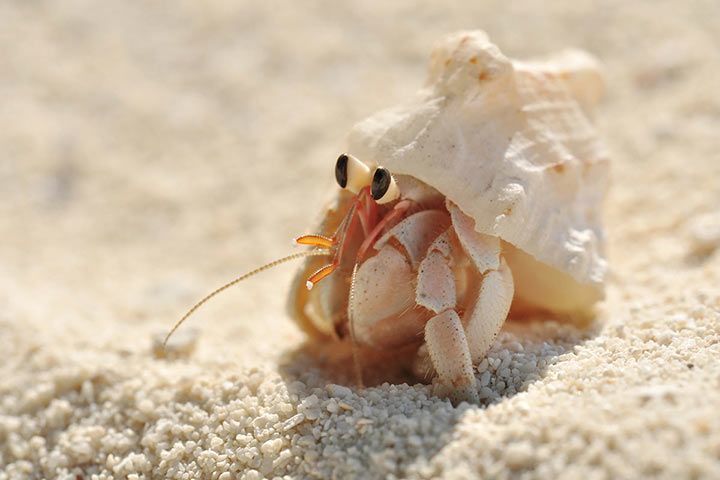
Evolution
Crustaceans have been living on earth for more than 500 millions of years. They are related to insects. Even terrestrial crustaceans breathe through gills.
Lifestyle
Where Do Crustaceans Live?
Crustaceans live in all the waters on earth, some are terrestrial animals.
What Do Crustaceans Eat?
Crustaceans feed on plant plankton.
How Do Crustaceans Move?
Crustaceans run or swim.
How Do Crustaceans Reproduce?
Crustaceans hatch from eggs as larvae before developing into fully grown animals.
Species
There are about 67,000 species of crustaceans:
| Malacostracae: | 28,000 |
| Mussel shrimps: | 15,000 |
| Copepods | 12,000 |
| Tongue worms: | 130 |
| Fish lice: | 130 |
| Rempipeda: | 24 |
| Horse shoe shrimps: | 11 |
Biodiversity
Who would have thought that sea urchins are important to nature? Fact. Because they eat algae, they prevent them from spreading too much and help to maintain a healthy, healthy underwater landscape. More about biodiversity.




